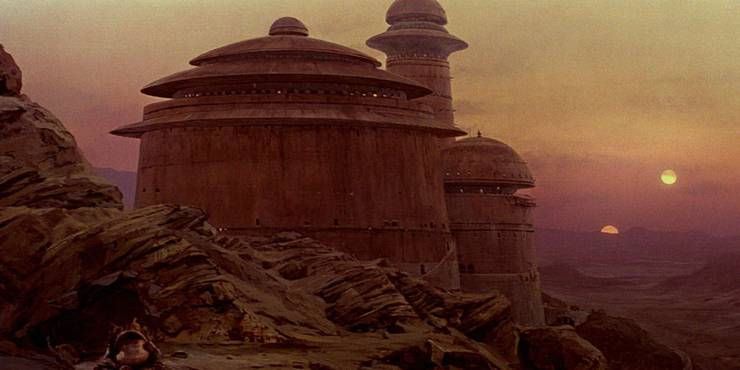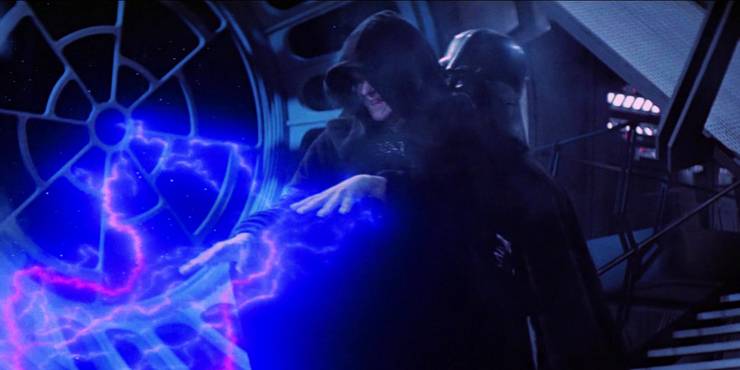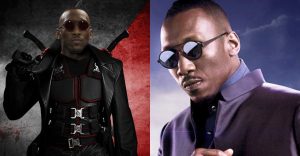How Star Wars Retroactively Improved Return of the Jedi

Over a decade after its theatrical release, Return of the Jedi was improved by the third Star Wars radio drama. The original Star Wars trilogy had several adaptations, such as comics and novelizations, but they also were adapted to radio, with one for A New Hope being released in 1980 and one for the Empire Strikes Back in 1983. These radio dramas did far more than turn the classic films into audio plays. They also added additional characters, scenes, dialogue, and lore to the original trilogy, helping to build the classic Expanded Universe/Legends continuity and tying it into the films seamlessly. Return of the Jedi’s adaptation was released in 1996, during a high point for the Legends continuity, and contained several references to it, along with dialogue and sequences that made the film even more emotionally resonant.
Although Empire Strikes Back is generally regarded as the greatest film in the Star Wars original trilogy, Return of the Jedi has the saga’s most poignant moments for its original trilogy characters. Among the many profoundly satisfying moments in the film are Luke Skywalker completing his journey to Jedi Knighthood and defeating the galaxy’s greatest evil through sentiment instead of fighting prowess. Similarly, Darth Vader struggles with his former life as a Jedi, and finally rejects the dark side, thanks to the love of his son. Building off the foundation of its predecessors (including, retroactively, the prequel trilogy), Return of the Jedi is perhaps the saga’s most underrated film, concluding the story of Anakin Skywalker and setting Luke Skywalker up to found a New Jedi Order that vastly improves on the previous generation.
The Return of the Jedi radio drama takes these hauntingly heartfelt qualities and emphasizes them even further, with a longer runtime than the film, new scenes (including several deleted scenes), and references to Legends content. The result was potentially even better than the original, which expanded on the lore of the film and integrated material from the beloved Thrawn Trilogy and the then-ongoing Shadows of the Empire multimedia project.
Luke’s Lightsaber Construction

The construction of Luke’s lightsaber is a particularly famous deleted scene from Return of the Jedi. The scene wasn’t widely available for public viewing until the 2011 Blu-Ray release of the film, but the scene presented some continuity snarls with the Legends timeline. Luke builds his iconic green-bladed lightsaber in a cave on the day that R2-D2 and C-3PO journey to Jabba’s Palace. Shadows of the Empire and the classic Marvel Star Wars comics establish that Luke built his lightsaber in Ben Kenobi’s Tatooine home months before the events of Return of the Jedi, making the deleted scene impossible to integrate into the timeline. The radio drama adapts the scene from Shadows of the Empire, but frames it similarly to the deleted scene, giving listeners the best of both worlds.
In the new opening scene for Return of the Jedi, Luke follows instructions left for him by Obi-Wan for lightsaber construction. Using a lightsaber crystal that he’d synthesized using both the Force and ordinary technology, rather than the traditional Adegan crystal (which the radio drama mentions directly), Luke completes the vital rite of passage for all Jedi, finalizing his new weapon, whose synthetic crystal generated its famous green blade. Although Luke’s lightsaber construction serves as the film’s new opening scene, it still takes place months before the rest of the story, flawlessly blending Shadows of the Empire with Return of the Jedi.
Tatooine Escape

After the Rebel heroes defeat Jabba and his enforcers at the Pit of Carkoon, they discover an Imperial blockade orbiting Tatooine, preventing their escape. The Empire predicted a Rebel attempt to rescue Han, so they stationed warships around the planet. Thanks to Artoo, who sabotaged the late Jabba the Hutt’s computer database during Luke’s mission, the crime lord’s surviving forces thought they’d been marked for death by the Empire, leading a flotilla of syndicate ships to fight their way through the Imperial blockade and allow the Millennium Falcon and Luke’s X-Wing to slip past them unnoticed.
The additional scene improves Return of the Jedi in multiple ways. The Empire’s resources are showcased, with warships being stationed around an obscure Outer Rim world with no significant Rebel presence. The scene also highlights their tactical efficiency, with their Navy correctly assuming that the Rebels would attempt to free one of their most valued leaders. Finally, it’s yet another instance of R2-D2 proving to be important to the Rebel heroes, as his ingenuity allowed the newly-rescued Han to avoid being recaptured by the Empire.
Vader’s Redemption

Return of the Jedi’s throne room sequence contains some of the film’s most dramatic moments, and the radio drama, through some new dialogue, makes it even more emotional. As the Emperor unleashes a barrage of deadly Force lightning on Luke, Vader finally turns against his master, throwing him off the throne room’s railing to his death. Vader did this silently in the film, but in the radio drama, he did so while declaring Palpatine to be “Darth Vader’s master, but not Anakin Skywalker’s,” indicating that he rejected his Sith identity as Palpatine’s apprentice and saw himself as Anakin once more.
In Anakin’s final moments, he wanted Luke to tell Leia that he’d been right about the good in him, but the radio drama added one additional line. Anakin told Luke that he’s proud that Luke grew into the man that Anakin once wanted to be. The line makes Anakin’s demise all the more tragic while highlighting that Luke overcame the failing that his father had as a Jedi, using emotion and attachment to support and protect his loved ones without succumbing to the dark side. In Legends, Luke would go on to found the New Jedi Order based on these practices, allowing Jedi to live normal and emotionally healthy lives alongside their Knighthood. Anakin likely wouldn’t have fallen to the dark side, had the prequel-era Jedi been like Luke’s Order in his day.
Legends Acknowledgements

In addition to including a Shadows of the Empire scene for its new opening, the Return of the Jedi radio drama also included a cameo appearance by the fan-favorite Legends character Mara Jade. Mara, a Sith assassin and the adopted daughter of the Emperor, was undercover in Jabba’s Palace under the guise of “Arica,” a dancer. Arica briefly speaks to C-3PO during her mission, confirming the Thrawn Trilogy’s detail that Mara was in Jabba’s Palace during the events of the film. The scene further humanized C-3PO and showed how close Mara, an extremely important character to the Legends timeline, came to encountering Luke before the events of the Thrawn Trilogy. This, like the other additions to the Star Wars radio drama, retroactively improved Return of the Jedi, which is no easy feat, considering the excellence of the film version.
- Rogue Squadron (2023)Release date: Dec 22, 2023
About The Author

















